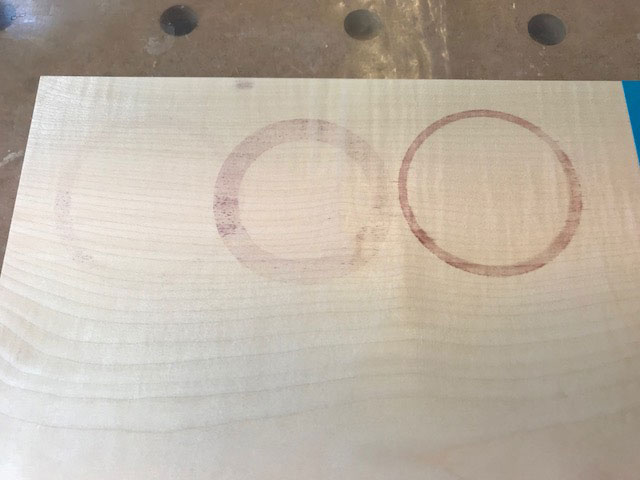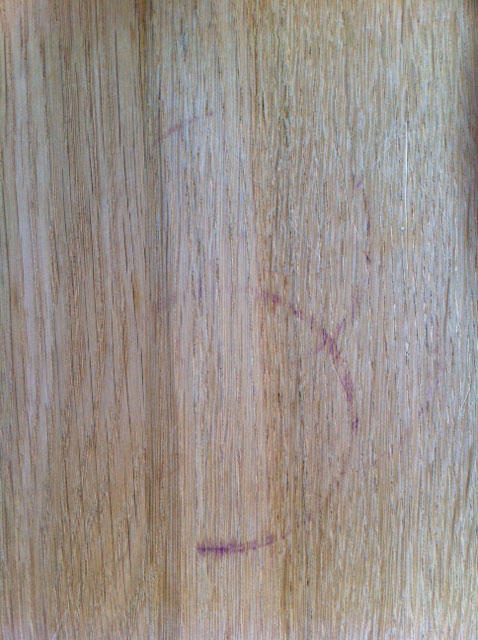When I set up as a full time furniture maker I decided not to build my workshop with a spray booth, I also anticipated that dining tables would be a fair percentage of my output. Consequently I invested a lot of time in testing and evaluating different finishing options.
Here's a typical test that I conducted, this one is red wine on Sycamore. I tried leaving the wet glass in place for one minute, ten minutes, and one hour on each finish ( I also tested with different fruit juices and with tap and distilled water, but let's keep this simple and just look at red wine).
I looked at scores of different finishes (always applying according to manufacturers instructions), and that included several water based pu finishes. No water based pu finish performed particularly well against red wine staining, but Polyvine was amongst the worst. Here's the one minute, ten minute, one hour results,
I should emphasise that this photo shows the result after trying to remove the wine staining with a damp rag. Bottom line is that even 60 seconds of red wine will effectively ruin pale furniture finished with Polyvine water based pu.
This is consistent with earlier experience and with a lot of feedback from other professional makers, here's an Oak dining table with a water based pu finish where the client complained about red wine staining, a call out to refinish a job like this will pretty much eat up any profit you might have made from the job,
I'm not a chemist so I can't comment on why water based pu does so badly in this respect, it's little more than a guess but I suspect that the term "polyurethane" is actually used pretty loosely by finish manufactueres and might actually be acrylic.
Water based pu finishes also have some other issues. It's very easy to overwork them and end up with a cloudy surface, plus several tend to be a little soft, which means matt versions can burnish from normal domestic polishing, resulting in areas of relative glossiness.
Oil based pu finishes are completely different and are relatively bomb proof, although you then have to accept different issues such as yellowing and curing time.
In terms of an easily applied finish with reasonable red wine stain resistance Osmo is worth a look, one and ten minute stains can be completely removed with a damp rag, and even one hour is borderline.


















































